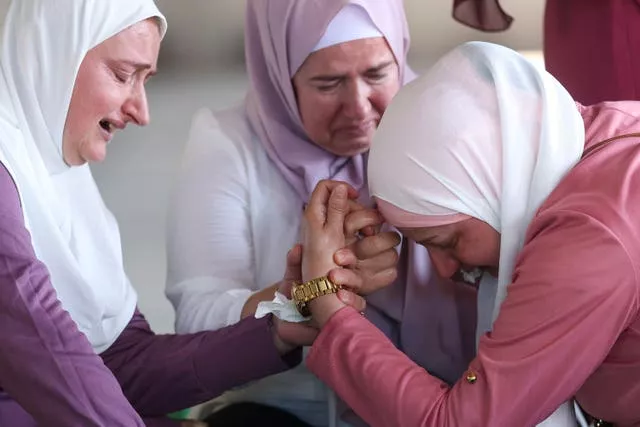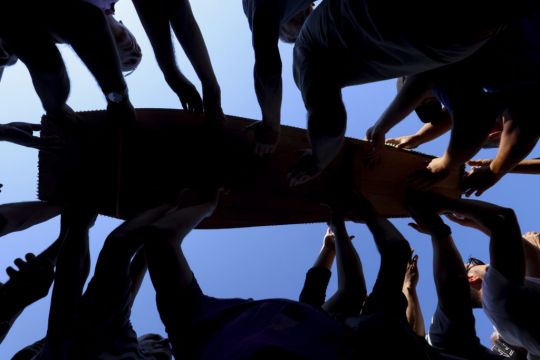Hundreds of people have lined the Bosnian capital’s main street as a truck carrying 30 coffins passed on its way to Srebrenica, where newly identified victims of Europe’s only acknowledged genocide since the Second World War will be buried on the 28th anniversary of the massacre.
As the truck, covered with a huge Bosnian flag, briefly stopped in front of the country’s presidential building in Sarajevo, members of the crowd tucked flowers into the canvas hiding the remains of victims found in mass graves and identified through DNA analysis.
Ramiza Gandic, who came to pay her respects, said: “It is devastatingly sad that hundreds of victims still have not been found and that some people still deny the genocide (in Srebrenica).”

Newly identified Srebrenica massacre victims are reburied annually on July 11, the day the killing began in 1995, at a vast memorial cemetery outside the eastern town.
So far, the remains of more than 6,600 people have been found and reburied there.
The Srebrenica killings were the bloody crescendo of Bosnia’s 1992-95 war, which came after the break-up of Yugoslavia unleashed nationalistic passions and territorial ambitions that set Bosnian Serbs against the country’s two other main ethnic populations – Croats and Bosniaks.

In July 1995, Bosnian Serbs overran a UN-protected safe haven in Srebrenica. They separated at least 8,000 Muslim Bosniak men and boys from their wives, mothers and sisters, chased them through woods around the ill-fated town, and slaughtered them.
The perpetrators then ploughed their victims’ bodies into hastily made mass graves, which they later dug up with bulldozers, scattering the remains among other burial sites to hide the evidence of their war crimes.
The massacre has been declared a genocide by international and national courts.
Serb leaders in Bosnia and neighbouring Serbia continue to downplay or even deny the massacre, despite the irrefutable evidence of what happened.







